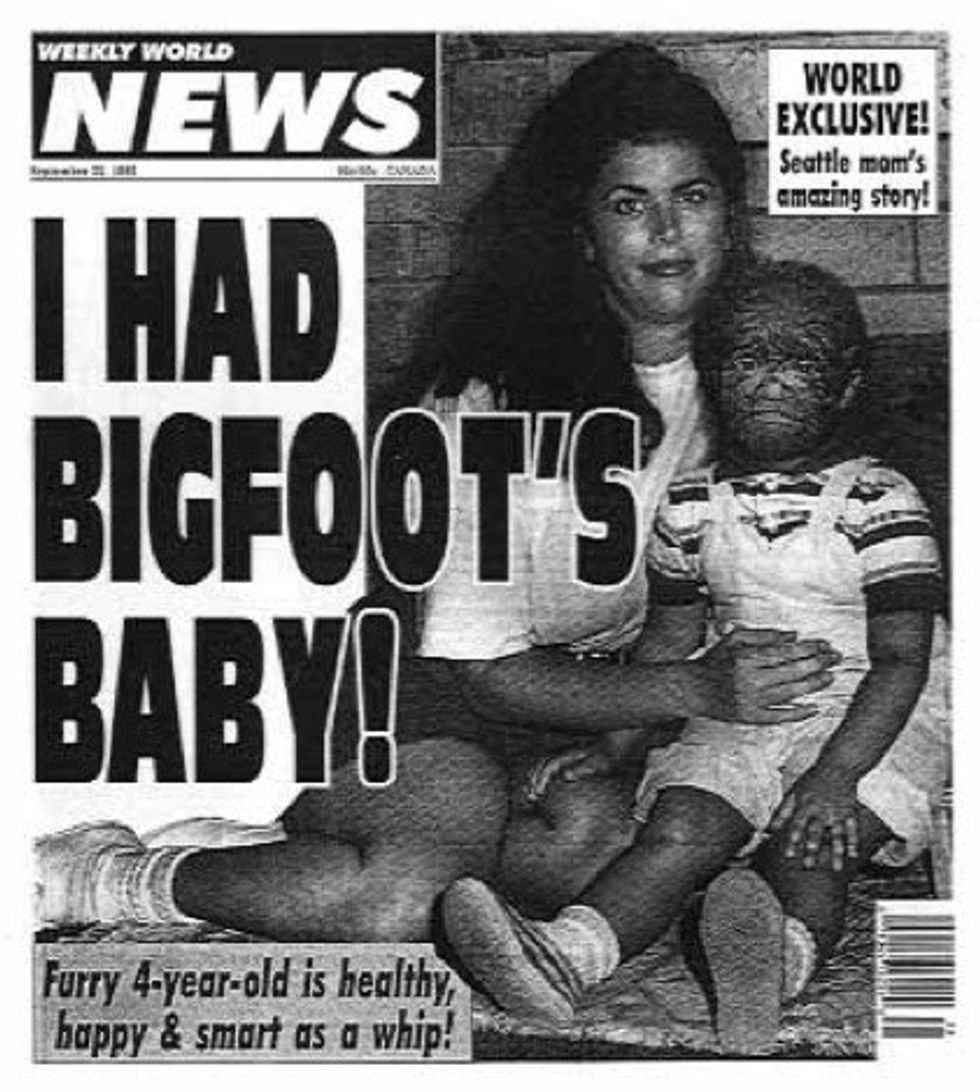As probably most are aware, the recent sightings of Bigfoot in Indonesia have caused many people to ask the question: Bigfoot… what are you doing in Indonesia?
Were we not good enough, Bigfoot? You were our American Icon, with the freedom to do as you please in the great outdoors without government interference, while still making bank on the side.
The answer is that Bigfoot is in search of new, foreign markets, taking much-needed jobs away from the U.S. workforce. After countless appearances in American movies and reality television, the prolific advertiser is focusing his gaze across seas—potentially removing vital sponsorship from Jack Link’s Beef Jerky and other products.
More importantly, Bigfoot contributes a significant amount of money to small towns in the form of tourism — all he has to do is throw some rocks at drunk campers in the woods, causing “shrines” to appear in town as restaurants and gas stations adopt his image as a patron on their walls, which he can then capitalize on revenue. And this is widespread with appearances all over America. As a result, groups like the Texas Bigfoot Research Conservancy can charge annual fees to those who want to seek Bigfoot. These groups conduct “expeditions” into the woods often having to buy expensive equipment in the process--one such being the Bigfoot Research Organization which takes tourists through a section of forest and “teaches” the basics of Bigfoot.
All manner of Bigfoot related products are funneled out of gift shops — from T-shirts to mugs and cement footprints. Towns like Willow Creek, California market themselves as “the Bigfoot capital of the world,” where there are museums, public celebrations, hotels, and statues built around the legend. Its social structure is permeated with oral propagation of brief but quasi-religious life-changing encounters with Bigfoot in the woods (On that one fateful day I was alone in the forest and heard a strange noise which came from the tallest, hairiest looking fellow…). Researcher John Napier has made remarks along these lines, saying: “Bigfoot in some quarters of North America has become Big Business, a commodity to be exploited to the full," giving legitimacy to any “stories” that spread and embed Bigfoot's image into American culture due to the ease that it can be sold to its audience.
Bigfoot was always “among us” in some way. The belief that he may be “out there” adds a certain brand to the way Bigfoot markets himself as a fleeting, untouchable figure, but yet one that is so universally approachable. Bigfoot’s corporate move leaves behind not only his purported children,
But the icon we can reliably cling to when something goes bump in the wilderness at night — that we can use to quantify something we can’t explain in nature as something looking similar to us and the fear goes away.





















 sunrise
StableDiffusion
sunrise
StableDiffusion
 bonfire friends
StableDiffusion
bonfire friends
StableDiffusion
 sadness
StableDiffusion
sadness
StableDiffusion

 purple skies
StableDiffusion
purple skies
StableDiffusion

 true love
StableDiffusion
true love
StableDiffusion
 My Cheerleader
StableDiffusion
My Cheerleader
StableDiffusion
 womans transformation to happiness and love
StableDiffusion
womans transformation to happiness and love
StableDiffusion
 future life together of adventures
StableDiffusion
future life together of adventures
StableDiffusion





















